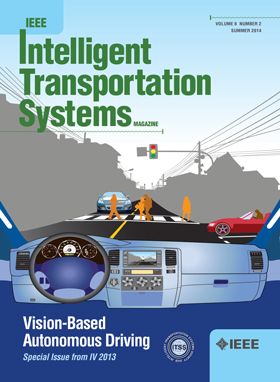通过考虑地理复杂性的新型空间机器学习方法进行大规模路面裂缝评估
IF 7.9
1区 工程技术
Q1 ENGINEERING, CIVIL
IEEE Transactions on Intelligent Transportation Systems
Pub Date : 2024-10-09
DOI:10.1109/TITS.2024.3467257
引用次数: 0
摘要
道路交通基础设施是整个基础设施网络的重要组成部分。要及时有效地维护道路,就必须对路面健康状况进行准确有效的评估,而裂缝是路面健康状况的一个重要方面。然而,由于空间差异,准确评估大规模道路网络中的路面裂缝仍然具有挑战性,这削弱了传统机器学习方法的有效性。本研究开发了一种新颖的空间机器学习(SML)模型,并利用激光扫描数据和卫星遥感图像来评估西澳大利亚州小麦带道路网络中基于路段的裂缝严重程度。引入了地理复杂性来衡量相邻路段之间局部模式和空间依赖性的复杂性。结果表明,SML 可以准确有效地预测大空间范围内的路面裂缝,准确度 (AC) 在 0.524 到 0.701 之间。在 SML 中,激光扫描路面变量占可解释总变化的 34.15% 至 43.33%,地理复杂性变量也有显著贡献,占 27.35% 至 49.92%。与多元线性回归(MLR)、广义加性模型(GAM)、贝叶斯正则化神经网络(BRNN)和支持向量回归(SVR)相比,SML 模型在裂缝预测方面的判定系数(R^{2}$)和 AC 值最高。研究结果通过考虑空间特征,深入洞察了大规模裂缝劣化,实现了高分辨率裂缝评估,为道路维护决策提供了支持。空间机器学习方法和地理复杂性概念可广泛应用于解决道路工程中的大规模空间任务。本文章由计算机程序翻译,如有差异,请以英文原文为准。
Large Scale Pavement Crack Evaluation Through a Novel Spatial Machine Learning Approach Considering Geocomplexity
Road transport infrastructure is a crucial component of the entire infrastructural network. Timely and efficient maintenance of roads requires accurate and effective evaluation of pavement health, of which cracking is an important aspect. However, accurately assessing pavement cracks across large-scale road networks remains challenging due to spatial variations, which diminish the effectiveness of traditional machine learning methods. This study developed a novel spatial machine learning (SML) model and employed laser scanning data and satellite remote sensing images to assess road segment-based crack severity across the state-level road network in the Wheatbelt of Western Australia. Geocomplexity is introduced to measure the complexity of local patterns and spatial dependence among neighboring road segments. Results showed that SML can accurately and effectively predict pavement cracks on a large spatial scale with an accuracy (AC) from 0.524 to 0.701. In the SMLs, laser-scanning pavement variables contributed 34.15% to 43.33% of the total explainable variations, and geocomplexity variables also contributed significantly, ranging from 27.35% to 49.92%. The SML model exhibited the highest coefficient of determination (
$R^{2}$
) and AC for crack prediction compared with Multiple Linear Regression (MLR), Generalized Additive Model (GAM), Bayesian Regularized Neural Network (BRNN) and Support Vector Regression (SVR). The findings provided a deep insight into large-scale crack deterioration by considering the spatial characteristics and achieved high-resolution crack assessment to support road maintenance decision-making. The spatial machine learning approach and the concept of geocomplexity can be widely applied to address large-scale spatial tasks in road engineering.
求助全文
通过发布文献求助,成功后即可免费获取论文全文。
去求助
来源期刊

IEEE Transactions on Intelligent Transportation Systems
工程技术-工程:电子与电气
CiteScore
14.80
自引率
12.90%
发文量
1872
审稿时长
7.5 months
期刊介绍:
The theoretical, experimental and operational aspects of electrical and electronics engineering and information technologies as applied to Intelligent Transportation Systems (ITS). Intelligent Transportation Systems are defined as those systems utilizing synergistic technologies and systems engineering concepts to develop and improve transportation systems of all kinds. The scope of this interdisciplinary activity includes the promotion, consolidation and coordination of ITS technical activities among IEEE entities, and providing a focus for cooperative activities, both internally and externally.
 求助内容:
求助内容: 应助结果提醒方式:
应助结果提醒方式:


